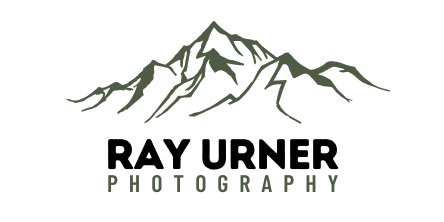Mastering the Exposure Triangle: A Guide for Aspiring Photographers
Wait, I have to juggle three things at once? This isn’t f’n Cirque du Soleil!
Yeah, I know what you’re thinking: Ray, this sounds really freaking tedious and boring, why the hell are you subjecting me to such nonsense like I’m back in high school? Yes it sounds dull, BUT once you understand this relatively simple concept, you’ll be able to ditch the green rectangle of doom forever (damn you, auto mode) and REALLY be able to capture the kinds of images that you want!
You see, photography is as much about understanding light as it is about capturing moments. One of the fundamental concepts every photographer must grasp is the exposure triangle. This trio of settings—aperture, shutter speed, and ISO—work together in perfect harmony to control the exposure of your photographs. Let's dive into each element, see how they interact, and use examples to make the concepts clear. You ready? LFG!
The exposure triangle consists of three critical components:
Aperture (f-stop)
Shutter Speed
ISO
Each of these settings affects the amount of light entering your camera and ultimately how your image will look.
1. Aperture / f-stop (Controls Depth of Field)
Aperture refers to the size of the lens opening that allows light to enter the camera. It's measured in f-stops (e.g., f/2.8, f/4, f/5.6, f/8, f/11).
Wide Aperture (low f-stop, e.g., f/2.8):
Example: Photographing a portrait with a blurry background.
Effect: More light enters the camera, creating a shallow depth of field (blurry background).
Narrow Aperture (high f-stop, e.g., f/16):
Example: Capturing a landscape where everything is in focus.
Effect: Less light enters the camera, creating a deeper depth of field (more in focus).
2. Shutter Speed (Controls Motion)
Shutter speed is the amount of time the camera's sensor is exposed to light, measured in seconds or fractions of a second (e.g., 1/1000, 1/250, 1/30, 1").
Fast Shutter Speed (e.g., 1/1000):
Example: Freezing the motion of birds in flight.
Effect: Less light enters the camera, motion is frozen.
Slow Shutter Speed (e.g., 1"):
Example: Capturing light trails from moving cars at night.
Effect: More light enters the camera, motion blur is visible.
3. ISO (Controls Sensitivity to Light)
ISO determines the sensitivity of the camera's sensor to light, with values ranging from 100 to 6400 or higher.
Low ISO (e.g., 100):
Example: Shooting in bright sunlight.
Effect: Less sensitivity, less noise (grain).
High ISO (e.g., 25600):
Example: Shooting indoors or in low light without a flash.
Effect: More sensitivity, more noise (grain).
Balancing the Triangle:
Example 1: Daytime Landscape (ie, a mountain towering over an alpine river)
Aperture: f/16 (deep depth of field)
Shutter Speed: 1/125 (prevents motion blur)
ISO: 100 (minimal noise)
Golden Ears Provincial Park in British Columbia
Example 2: Indoor Portrait
Aperture: f/2.8 (blurry background)
Shutter Speed: 1/60 (sufficient light, minimal blur)
ISO: 800 (increased sensitivity for low light)
Portrait of Sydney, with a wide f-stop to create a blurry background
Understanding the exposure triangle is essential for any photographer. By mastering aperture, shutter speed, and ISO, you can take control of your camera and create the images you envision. Practice adjusting these settings and observe how they impact your photos.
Any questions, feel free to shoot me an email.
Happy shooting friends!









